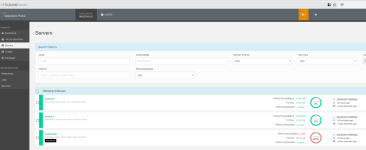anyone have any good pointers for hand-rolling this? I have a bunch of VMs on a linux+zfs host I want to move to another linux+zfs host. I can do it by hand but figured I might as well get to grips with
All the guides from the big boys (IBMHat, SUSE etc,) don't seem to touch on this and go to great lengths about kernel tunables and whatnot, but I'm looking for something way more prosaic:- no, I'm not adding SSH keys to the root account on the destination nor am I allowing root access just for
Do folks have any such links? share the goodness pretty please

virsh migrate but that immediately exposes my assumptions about roles and where I have implicitly crossed permission boundaries with my uid being in libvirt and then liberal zfs root usage (it need not be zfs, I'm sure the same would be true in other volume/storage management).All the guides from the big boys (IBMHat, SUSE etc,) don't seem to touch on this and go to great lengths about kernel tunables and whatnot, but I'm looking for something way more prosaic:- no, I'm not adding SSH keys to the root account on the destination nor am I allowing root access just for
qemu+ssh://Do folks have any such links? share the goodness pretty please




